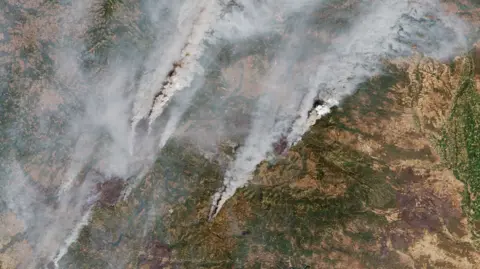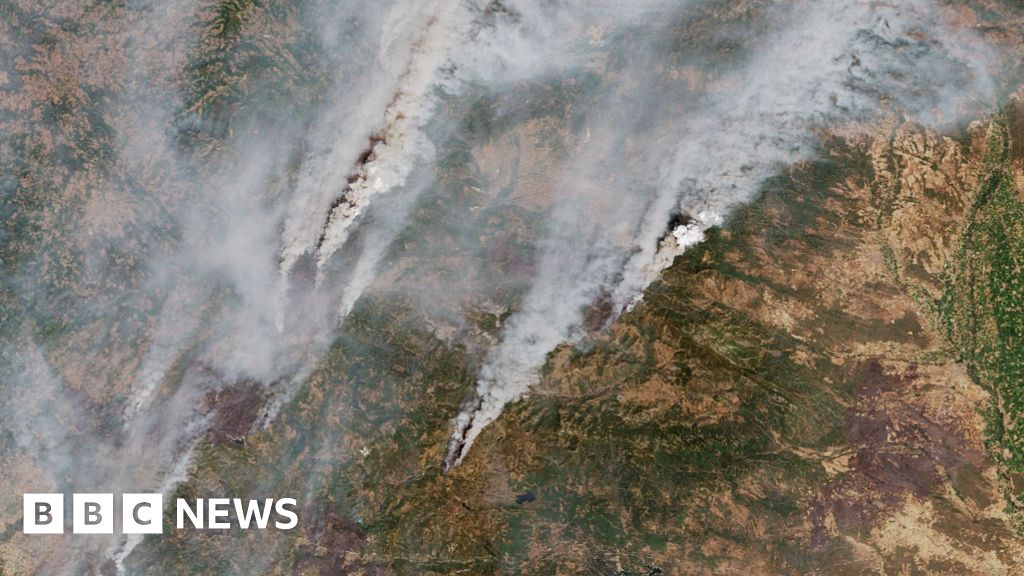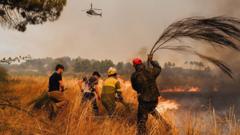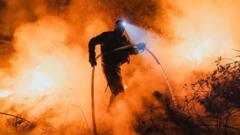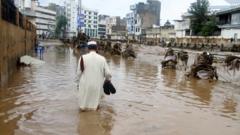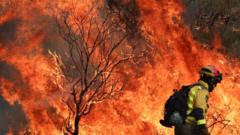In recent years, air travel has witnessed a rise in the severity and frequency of turbulence incidents, leading experts to delve into the implications of climate change on this phenomenon. Andrew Davies, a project manager on his way to New Zealand for a Doctor Who exhibition, experienced a harrowing encounter with severe turbulence during a Singapore Airlines flight. He described the terrifying experience as akin to “being on a rollercoaster,” with the plane dropping abruptly, causing chaos in the cabin. Tragically, some passengers sustained severe injuries, and the situation highlights growing concerns over turbulence during flights.
While deaths resulting from turbulence are rare, with estimates of only four fatalities since 1981, injuries are more prevalent. Data from the National Transportation Safety Board shows that over 200 severe injuries have been reported in the U.S. since 2009, with turbulence contributing to nearly 40% of serious passenger injuries in 2023 alone, according to a recent International Civil Aviation Organization report.
As climatic shifts continue to influence atmospheric conditions, experts predict that turbulence will become a more significant aspect of air travel. Professor Paul Williams from the University of Reading warns that we can expect a doubling or tripling in the occurrence of severe turbulence in the coming decades. He cites that for every 10 minutes of current severe turbulence, this could escalate to 20 or 30 minutes in future flights.
The nature of turbulence can be broadly categorized into three main types: convective, orographic, and clear-air turbulence. Convective turbulence arises from storms, while orographic turbulence results from airflow around mountains. Clear-air turbulence, however, poses a unique challenge as it is often invisible to pilots and emerges unexpectedly. Climate change exacerbates these forms of turbulence, especially convective turbulence caused by warmer temperatures fostering more intense thunderstorms.
Interestingly, research has revealed regions that are particularly susceptible to turbulence, with the North Atlantic seeing a 55% increase in severe incidents over the last 40 years. Other areas of concern include routes between the UK and regions like North America and parts of the Middle East. Climate change's influence on upper-atmospheric wind patterns and temperature variations is contributing to this trend.
With the aviation industry facing economic ramifications from increased turbulence, airlines are taking proactive steps to mitigate risks. Technological advancements have improved turbulence forecasting, allowing for better preparation prior to flights. Some airlines have altered cabin service patterns to minimize injuries during turbulent periods, while others are exploring innovative designs in aircraft wings aimed at counteracting turbulence effects.
New technologies are also emerging in the industry. Startups are developing systems to detect turbulent air and adapt wing mechanics accordingly, potentially reducing turbulence impacts by up to 80% on smaller aircraft.
Despite the concerning research, aviation experts maintain that flying remains safe. Improvements in aircraft design ensure they can withstand challenging conditions, and pilots are well-trained to handle turbulence when it occurs. Nevertheless, as Andrew Davies noted, the psychological impact of expected turbulence could influence how passengers perceive and experience flights, urging a focus on safety and preparedness in the increasingly turbulent skies ahead.
This ongoing evolution in air travel underscores the importance of addressing climate change, particularly as the turbulence we encounter in the skies becomes a more significant concern for both passengers and the airline industry. As the effects of climate change on turbulence become clearer, a collaborative approach between experts, airlines, and regulators will be crucial in ensuring the safety and comfort of air travel in the future.
While deaths resulting from turbulence are rare, with estimates of only four fatalities since 1981, injuries are more prevalent. Data from the National Transportation Safety Board shows that over 200 severe injuries have been reported in the U.S. since 2009, with turbulence contributing to nearly 40% of serious passenger injuries in 2023 alone, according to a recent International Civil Aviation Organization report.
As climatic shifts continue to influence atmospheric conditions, experts predict that turbulence will become a more significant aspect of air travel. Professor Paul Williams from the University of Reading warns that we can expect a doubling or tripling in the occurrence of severe turbulence in the coming decades. He cites that for every 10 minutes of current severe turbulence, this could escalate to 20 or 30 minutes in future flights.
The nature of turbulence can be broadly categorized into three main types: convective, orographic, and clear-air turbulence. Convective turbulence arises from storms, while orographic turbulence results from airflow around mountains. Clear-air turbulence, however, poses a unique challenge as it is often invisible to pilots and emerges unexpectedly. Climate change exacerbates these forms of turbulence, especially convective turbulence caused by warmer temperatures fostering more intense thunderstorms.
Interestingly, research has revealed regions that are particularly susceptible to turbulence, with the North Atlantic seeing a 55% increase in severe incidents over the last 40 years. Other areas of concern include routes between the UK and regions like North America and parts of the Middle East. Climate change's influence on upper-atmospheric wind patterns and temperature variations is contributing to this trend.
With the aviation industry facing economic ramifications from increased turbulence, airlines are taking proactive steps to mitigate risks. Technological advancements have improved turbulence forecasting, allowing for better preparation prior to flights. Some airlines have altered cabin service patterns to minimize injuries during turbulent periods, while others are exploring innovative designs in aircraft wings aimed at counteracting turbulence effects.
New technologies are also emerging in the industry. Startups are developing systems to detect turbulent air and adapt wing mechanics accordingly, potentially reducing turbulence impacts by up to 80% on smaller aircraft.
Despite the concerning research, aviation experts maintain that flying remains safe. Improvements in aircraft design ensure they can withstand challenging conditions, and pilots are well-trained to handle turbulence when it occurs. Nevertheless, as Andrew Davies noted, the psychological impact of expected turbulence could influence how passengers perceive and experience flights, urging a focus on safety and preparedness in the increasingly turbulent skies ahead.
This ongoing evolution in air travel underscores the importance of addressing climate change, particularly as the turbulence we encounter in the skies becomes a more significant concern for both passengers and the airline industry. As the effects of climate change on turbulence become clearer, a collaborative approach between experts, airlines, and regulators will be crucial in ensuring the safety and comfort of air travel in the future.






